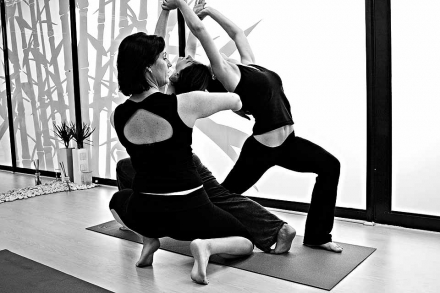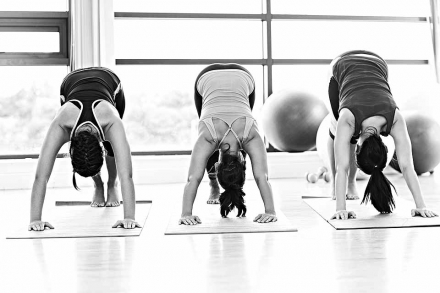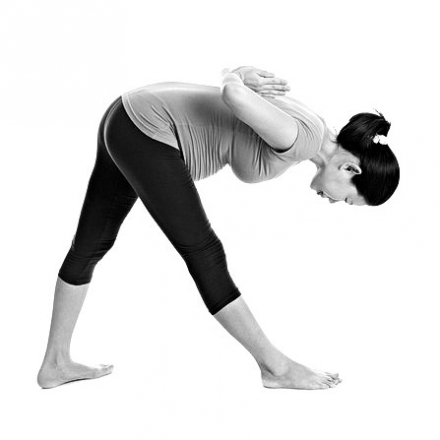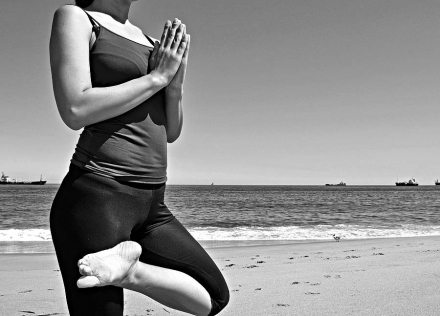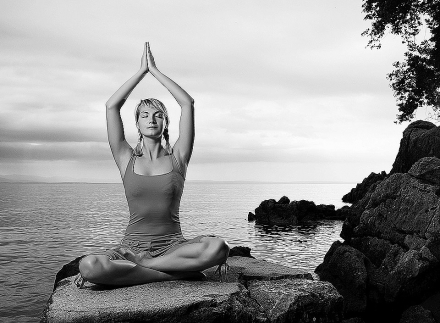Hello there, fellow yoga lover! Ever wondered how yoga and nutrition go hand in hand? It’s like the perfect blend of chai tea and a cozy blanket on a rainy day. With the right diet for yoga, you can fuel your practice like a well-oiled machine, making every pose feel like a breeze. But, it’s not just about eating healthy; it’s about adopting a healthy yoga diet that’s tailored to your specific needs and yoga goals.
Now, you might be thinking, “What on earth is a healthy yoga diet?” Don’t fret, my friend! It’s simpler than trying to perfect a handstand on your first try. A yoga diet is essentially a balanced and mindful way of eating that complements your yoga practice. It delivers all the necessary nutrients that your body needs to perform yoga effectively and recover quickly. Just like how you can’t perform yoga on an empty stomach, you can’t fuel your practice with junk food. Stay tuned as we dive deeper into the world of yoga and nutrition!
Table of Contents
Understand the Basics of Nutrition
Let’s dive into Understanding the Basics of Nutrition. We’ll first examine Macronutrients and Micronutrients, essential elements for our wellbeing. Then, we’ll discuss Calorie Needs, to comprehend how many we need daily. Next, we’ll decipher Understanding Food Labels, so you can make informed decisions. We’ll also delve into Fats and Carbohydrates, to understand their crucial roles. Lastly, we’ll adopt some Healthy Eating Habits to nourish our bodies properly. It’s going to be a fun and informative journey!
Macronutrients and Micronutrients
These are the essential nutrients your body needs to function properly. Macronutrients are nutrients that our bodies require in large amounts and include carbohydrates, proteins, and fats. They are the main source of energy for the body. On the other hand, we have Micronutrients. These are required in smaller quantities but are still equally important. They include vitamins and minerals, vital for maintaining overall health and boosting immunity. Some examples include Vitamin C, potassium, and iron. A healthy nutrition plan should include a mix of both macronutrients and micronutrients. Remember, balance is key in nutrition. In the following sections, we’ll explore more on other vital aspects of nutrition, like calorie needs and understanding food labels.
Calorie Needs
Let’s now turn our focus to an equally vital component of nutrition – your calorie needs. Imagine your body as a car, and calories are its fuel. Different cars require different amounts of fuel, just like different bodies need different amounts of calories.
Your calorie needs are determined by your age, gender, weight, height, and physical activity level. For example, a highly active youngster would need more calories than a sedentary elderly person. Understanding your calorie needs is crucial because it helps you balance energy in with energy out.
Remember that consuming too many calories without burning them off can lead to weight gain. On the flip side, consuming too few calories can make you feel lethargic and weak. As we delve into the realms of Fats and Carbohydrates and Healthy Eating Habits, keep this energetic balance in mind. It’s all about finding that perfect harmony.
Understanding Food Labels
Let’s take a brief pause to focus on a vital skill – understanding food labels. This may seem like a small piece of the puzzle, but trust me, it’s paramount to your success.
Deciphering food labels can feel like you’re reading a foreign language. It’s filled with big words like polyunsaturated fats, dietary fiber, and fortified. But don’t worry, it’s not as scary as it seems.
The key factors to look out for are serving size, calories, and nutrients. First, check the serving size because all the other information on the label is based on that amount. Calories are next in line. Generally speaking, 40 calories is considered low, 100 calories is moderate, and 400 or more is high. Then, look at the nutrients. Aim for foods low in saturated fat, trans fat, cholesterol, and sodium.
Understanding food labels is like having a secret weapon for healthier eating.
Create a Balanced Diet

Creating a balanced diet is all about making smart choices. Start by eating whole foods, as they’re rich in essential nutrients. Prioritize foods high in macronutrients like carbs, protein, and fats. Don’t fear fats and proteins; instead, opt for healthy fats and proteins that fuel your body. Another key aspect is managing portion sizes – it’s not just what you eat, but how much. Lastly, let’s delve into the protein’s role in diet. It’s more than just muscle food; it’s a vital part of any balanced diet. Let’s explore these subtopics in detail!
Eat Whole Foods
A crucial aspect of this is to eat whole foods. Whole foods are foods that are unprocessed and unrefined, or processed and refined as little as possible before being consumed. They are free of artificial substances and additives, and packed with nutrients.
Fruits, vegetables, legumes, nuts, and whole grains are excellent examples of whole foods. They are packed with dietary fiber, vitamins, and minerals, which are essential for your overall health. Whole foods also contain beneficial compounds like antioxidants, which protect your cells against damage.
One of the best things about eating whole foods is how versatile they are. You can munch on carrot sticks for a snack, add spinach to your smoothie, or sprinkle some blueberries on your breakfast cereal. So, go ahead and make whole foods an integral part of your balanced diet – your body will thank you!
Choose Foods Rich in Macronutrients
Let’s dive into the world of macronutrients! Macronutrients are the three main categories of nutrients that our bodies need in large quantities. These are carbohydrates, proteins, and fats.
Choosing foods rich in macronutrients ensures that our body gets the fuel it needs to function optimally. Carbohydrates, or carbs as they are popularly known, are the body’s main source of energy. So, don’t shy away from whole grains, fruits, vegetables, and legumes. They’re your carb-besties!
Proteins are the building blocks of our body. Go for lean meats, poultry, fish, eggs, tofu, and beans for a protein-rich diet. Remember, every cell in your body needs protein to thrive!
Lastly, not all fats are bad. Unsaturated fats from avocados, nuts, seeds, and fish are heart-healthy and essential for absorbing vitamins.
Include Healthy Fats and Proteins
Our next stop on this nutritional journey is the incorporation of healthy fats and proteins into your diet.
Contrary to popular belief, not all fats are bad! In fact, healthy fats are vital for our bodies to function optimally. Foods like avocados, nuts, seeds, and fatty fish are excellent sources of healthy fats that can improve brain function and support heart health.
Moving on to proteins, this essential macronutrient should be a constant in your meals. Proteins are the building blocks of our bodies. They play a crucial role in creating enzymes, hormones, and other body chemicals. Lean meats, fish, eggs, and legumes are great sources of high-quality protein.
Remember, balance is the key here. Ensuring your diet includes a variety of these nutrient-dense foods will help you create a truly balanced diet. Isn’t nutrition fascinating?
Consume the Right Foods Before and After Practice
Starting with Pre-Practice Foods, we’ll explore what to consume before your yoga session. Then, we’ll tackle the equally important Post-Practice Foods. Next, we’ll dive into the Role of Carbohydrates in Recovery, understanding its importance for your body. After that, we’ll discuss Nutrient Timing for Yoga to maximize the benefits of your practice. Lastly, we’ll talk about Avoiding Heavy Meals Before Yoga to ensure you have a comfortable and effective practice. Let’s nourish our bodies correctly for yoga!
Pre-Practice Foods
Onto the specifics of what to consume before a yoga practice. Your Pre-Practice Foods play a pivotal role in fueling your body for the session ahead. Ideally, you should aim for a light but nutrient-dense meal about 1-2 hours prior to practice.
Think along the lines of a fruit smoothie, a bowl of oatmeal topped with chia seeds and berries, or a slice of whole grain toast with almond butter. Foods rich in complex carbohydrates are your best friends here, as they provide steady, slow-releasing energy throughout your practice.
Be sure to also include a good source of lean protein, such as Greek yogurt or a handful of nuts, for sustained energy. Hydration is equally important, so don’t forget to sip on water or herbal tea before your session. Remember, the goal is to feel energized, not weighed down, so keep portions modest and listen to your body.
Post-Practice Foods
What you should eat after your yoga practice? After a session of yoga, your body is in a recovery mode and it’s important to refuel it with the right nutrients to help rebuild and restore.
So what exactly should you eat post-practice? The answer is simple – a mix of protein and carbohydrates. Protein helps repair the muscles and tissues worked during your practice, while carbohydrates replace the energy lost. A simple post-practice meal could be a banana with a scoop of peanut butter, or a protein smoothie with fruits.
Remember to drink plenty of water too, hydration is equally important for recovery. Balancing the right amount of carbohydrates and protein after your yoga session will not only aid in recovery but also prepare your body for the next session. So, the next time you roll up your yoga mat, make sure to grab a healthy post-practice snack!
Role of Carbohydrates in Recovery
Carbohydrates are your body’s main source of energy, and they play an instrumental role in recovery after a strenuous yoga session. Following yoga, your body needs to replenish its glycogen stores, and it’s carbohydrates that make this possible.
The friendly advice here is to focus on complex carbohydrates like whole grains, fruits, and veggies. These not only replenish your energy stores but also provide a host of other nutrients. Plus, they have the added advantage of being slow to digest, which means they provide a steady stream of energy for a longer duration.
So, don’t shy away from carbs after your yoga routine. They’re the friends who help you bounce back, ready for your next yoga session. Remember, recovery is just as important as the workout itself. Stay tuned for more on pre and post-yoga nutrition!
Find a Diet That Works for You
In the quest to Find a Diet That Works for You, it’s essential to explore different dietary approaches. For an Earth-friendly, balanced diet, Macrobiotic Diet is worth considering. If you’re compassionate about animals, a Vegan Diet may resonate with you. For those who prefer ancestral eating habits, the Paleo Diet could be the go-to choice. Alongside these, incorporating Mindful Eating is a beautiful practice that nurtures both body and mind. Remember, the key to long-term health benefits is not a radical shift, but Making Sustainable Dietary Changes.
Macrobiotic Diet
Transitioning from the healthy foods you should consume before and after practice, let’s explore a world of diets that could be a perfect fit for your lifestyle. We’ll start off with the Macrobiotic Diet.
The Macrobiotic Diet leans towards a more holistic and balanced approach to food. This diet emphasizes on consuming foods that are natural and balanced. It primarily includes whole grains, vegetables, and beans. Processed foods and most animal products are typically avoided. The Macrobiotic Diet isn’t just about what you eat, but also how you eat. Chewing thoroughly, eating in a calm environment, and balancing your meals are key aspects of this diet.
The goal of the Macrobiotic Diet is to harmonize your body with the natural world. It’s a diet that encourages you to be more mindful about what you put into your body. Isn’t it exciting to explore different ways of maintaining your health?
Vegan Diet
Transitioning from the foods you should consume before and after practice, let’s delve into the exciting world of finding a diet that suits you best. One of these diets, which is gaining popularity worldwide is the Vegan Diet.
Now don’t be startled, folks! Going vegan doesn’t mean you’ll miss out on your favorite dishes. It’s all about substituting animal products with plant-based alternatives, and the good news is, it’s easier than it sounds.
A vegan diet can be incredibly nutritious and rich in fiber, antioxidants, and beneficial plant compounds. It’s also low in saturated fat and high in vitamins. Now, isn’t that a win-win?
However, remember, every diet, including a vegan one, needs to be balanced to provide all necessary nutrients. So make sure you’re getting enough vitamin B12, Iron, and Omega-3, which are generally found in animal products.
Remember, your diet should work for you, not against you. So, choose wisely and eat healthily!
Paleo Diet
Transitioning from the importance of consuming the right foods, let’s now delve into the world of diets that could work for you. Specifically, let’s explore the Paleo Diet. This diet encourages you to eat like our ancient ancestors did. It’s all about consuming whole foods that could be hunted or gathered. So, get ready to make friends with lean meats, fish, fruits, vegetables, nuts, and seeds! 🍖🥦🍓🥜
However, don’t be disheartened if you’re a bread lover, because it’s not about deprivation but about making healthier choices. The Paleo Diet is known for its benefits like weight loss and improved heart health. It might seem a bit challenging at first, but remember, the key is to find joy in this culinary adventure. So, are you ready to go paleolithic?
Stay Hydrated
Staying well-hydrated boosts your overall well-being. We’ll discuss the benefits of staying hydrated and how to maintain proper hydration during practice. Timing is crucial, so we’re going to learn about timing hydration for yoga. Also, we will provide you with the water intake recommendations for yoga. Let’s not forget about nourishment! Explore the best hydrating foods for yoga practice to keep your body in perfect balance.

Benefits of Staying Hydrated
While finding the right diet is crucial, don’t overlook the importance of staying hydrated, especially during your yoga practices. Let’s dive into the benefits of staying hydrated to understand why it’s a vital aspect of your yoga routine.
Hydrating your body comes with a host of wellness benefits. For starters, it helps maintain the balance of bodily fluids, which is crucial for digestion, absorption, circulation, and maintaining body temperature. It also helps in keeping your skin glowing and healthy, giving you that much-desired youthful look.
Moreover, when you’re properly hydrated, your muscles and joints work better. This is particularly important in yoga, as it can enhance your flexibility, strength, and overall performance. Proper hydration keeps the body’s systems functioning smoothly, and can even boost your mood and energy levels. So remember, an essential part of your yoga routine is not just the poses, but also ensuring you’re well-hydrated. Stay hydrated, stay healthy!
Proper Hydration During Practice
Just as you’ve begun to understand the importance of finding a diet that suits your body’s requirements, it’s now time to turn our attention to another crucial element of your yoga journey: staying hydrated. Let’s dive into the role of proper hydration during practice.
A yoga session can be quite the workout, and just like with any physical activity, your body loses water through sweat. Staying hydrated isn’t simply about quenching your thirst, it’s about maintaining the balance of bodily fluids that aid in digestion, absorption, circulation, and maintaining your body temperature.
During your practice, keep a water bottle by your side. Take small sips throughout, but remember not to guzzle down large amounts, as it can lead to discomfort. Listen to your body and hydrate accordingly. Try to ensure that you’re well-hydrated before you start your session, as it can help enhance your performance and keep you energized.
Staying hydrated is as vital as the asanas, so make it a part of your yoga routine.
Timing Hydration for Yoga
Transitioning from finding the perfect diet, let’s now dive into the importance of timing hydration for your yoga practice. Just like meals, the timing of your water intake plays a crucial role in getting the most out of your yoga sessions.
Drinking water right before your yoga practice may leave you feeling bloated and uncomfortable. So, it’s recommended to consume water at least 30 minutes prior to starting your practice. This allows your body to effectively absorb and distribute the water throughout your system, ensuring you’re well-hydrated during your session.
Post-yoga, it’s equally important to replenish your fluids. To help your muscles recover faster, make sure to hydrate within 30 minutes after your practice. Just remember, it’s all about balance and timing. So, make hydration a part of your yoga routine, not an afterthought!
Manage Stress
To Manage Stress, it’s important to nourish your body with Foods Rich in Vitamin B. Incorporating Relaxation Techniques in your daily routine can also significantly reduce stress levels. Likewise, practicing Yoga Poses has been proven beneficial for stress reduction. Healthy Eating is another key factor in combating stress. Lastly, Herbal Supplements can support stress management, offering a natural approach to maintaining mental balance.

Eat Foods Rich in Vitamin B
Moving on from hydration, let’s now focus on another crucial aspect of managing stress – your diet. Eating right can significantly help your body fight stress.
Specifically, incorporating foods rich in Vitamin B can have a profound impact on your mental well-being. Vitamin B plays a vital role in maintaining brain function and has been linked to improved mood and temperament. Foods like whole grains, eggs, green leafy vegetables, and citrus fruits are all excellent sources of Vitamin B.
You might ask, “Why Vitamin B?“. Well, these magical vitamins can help your body convert the food you eat into energy more efficiently. This keeps your body healthier and more resilient to stress. So next time you’re feeling a little stressed, reach for a whole grain sandwich or a citrusy snack. It’s a simple and delicious way to keep stress at bay. Isn’t it great how a few dietary tweaks can make a big difference?
Practice Relaxation Techniques
Just as you quench your thirst to maintain your body’s balance, it’s equally important to soothe your mind. Let’s dive into relaxation techniques to help manage stress.
Practicing relaxation techniques is a great way to keep stress at bay. Begin with deep breathing. It’s as simple as it sounds, but incredibly effective! Inhale deeply through your nose, hold it for a few seconds, and then exhale slowly through your mouth. Feel the tension leaving your body with each exhale.
Next, try guided imagery. Close your eyes and imagine a peaceful place. Visualize every detail; the sounds, the smells, the colors. It’s like taking a mini vacation in your mind!
Lastly, progressive muscle relaxation is another excellent technique. It involves tensing and then relaxing each muscle group, starting from your toes and working your way up to your head.
Remember, the key to these techniques is consistency.
Yoga Poses for Stress Reduction
While keeping your body hydrated is essential, it’s equally important to keep your mind tranquil. Let’s pivot to the calming art of yoga. Yoga has been renowned for its stress-reducing benefits for centuries. It combines physical postures, breathing exercises, and meditation to balance mind, body, and spirit.
One of the best yoga poses for stress reduction is the Child’s Pose. This position allows you to focus inward, away from external distractions. It’s a resting pose that calms the mind and eases stress and anxiety.
Another amazing pose is the Bridge pose. It helps to reduce anxiety, fatigue, backaches, and insomnia. It also calms the brain and helps alleviate stress and mild depression.
Last but not least, the Corpse Pose is a deep relaxation pose that provides a sense of peace and calm. It’s usually performed at the end of a yoga session.
Remember, yoga is not just an exercise for your body, but also for your mind.
Get Enough Sleep
To get enough sleep, it’s essential to consider various factors. Eating for Better Sleep is key, as what we consume can impact our sleep quality. Establishing a Sleep Routine helps by regulating our body’s internal clock. Including Yoga Poses for Better Sleep in this routine can promote relaxation and deep rest. Also, we cannot overlook the important role of sleep in Muscle Recovery and Mental Health, as adequate rest is necessary for physical regeneration and emotional well-being. Let’s dive into these subtopics to maximize our sleep potential!
Eating for Better Sleep
As we’ve seen, managing stress is crucial for a healthier life. Now, let’s transition into another crucial aspect – getting adequate sleep. Our first stop on this journey is exploring how our dietary choices can affect our sleep quality.
Does the phrase Eating for Better Sleep sound intriguing? Well, it’s as simple and satisfying as it sounds. Certain foods are known for their sleep-promoting properties. For instance, try incorporating foods rich in magnesium, like nuts or whole grains, into your evening meals. You might also consider cherries, which are a natural source of melatonin, the sleep hormone.
Don’t forget to avoid large meals close to bedtime and reduce your intake of caffeinated drinks as the day progresses. Remember, it’s not only about what you eat, but also when and how much! So, let’s aim for a balance for a good night’s sleep. Stay tuned for more tips on how to improve your sleep quality!
Establish a Sleep Routine
As we transition from managing stress, let’s dive into another crucial aspect of well-being – getting enough sleep. Establishing a sleep routine can make a significant difference to your health and overall quality of life.
First things first, try setting a fixed bedtime and sticking to it, even on weekends. Your body has its own regulatory system, the circadian rhythm, which loves consistency. Also, create a relaxing pre-sleep routine. This could be anything from reading a book, taking a warm bath, or even enjoying some relaxing music.
Remember, it’s crucial to create a peaceful sleep environment. Make sure your bedroom is dark, quiet, and cool. Perhaps, you could consider investing in a good quality mattress and pillows for added comfort.
In a nutshell, establishing a sleep routine is much more than just setting a bedtime. It’s about creating a consistent, relaxed, and comfortable environment to optimize your sleep.
Yoga Poses for Better Sleep
While managing stress is crucial for overall health, let’s not forget the importance of a good night’s sleep as well. A unique method to improve your sleep quality is through the practice of yoga. Yoga Poses for Better Sleep can be a game-changer for those struggling to sleep soundly.
Practicing specific yoga poses can help you prepare your body and mind for restful sleep. The Child’s Pose, for example, is a great pose to start with as it helps to calm the mind while stretching the back. Another useful position is the Legs-Up-The-Wall Pose, which is known to relieve lower back pain and even insomnia. The Corpse Pose is another favorite for promoting relaxation and sleep readiness, acting as a deep rest pose.
Remember, it’s not just about doing these poses, but doing them mindfully, paying attention to your breath and the sensations in your body. So, why not give it a try and see how yoga can transform your sleep experience?
Listen to Your Body
To truly Listen to Your Body, it’s essential to learn how to Recognize Hunger Signals. This helps us respond appropriately to our body’s needs. From there, we need to Eat Mindfully, savoring each bite and promoting better digestion. It’s also key to remain in tune with our Energy Levels, as they often reflect our nutritional state. Making mindful Food Choices can drastically affect those levels. Lastly, having a clear Understanding of Your Body’s Nutrient Needs ensures we’re nourishing our bodies effectively. Let’s explore these subtopics further!
Learn to Recognize Hunger Signals
While it’s important to ensure that your body has ample time to restore and rejuvenate through sleep, it’s equally essential to listen to its signals throughout the day. The first step in this journey is to learn to recognize hunger signals.
Our bodies have a wonderful way of telling us when they need fuel. It’s not just a growling stomach; it’s a variety of signs like low energy, difficulty focusing, and even mood swings. One common misconception is that we should only eat when our stomachs are growling. However, waiting until you’re extremely hungry can often lead to overeating or selecting unhealthy food choices.
Mindful eating starts with understanding your body’s unique hunger signals and responding to them promptly. So, next time you feel a dip in energy or concentration, don’t dismiss it. It might just be your body asking for its next meal!
Eat Mindfully
Just as a good night’s sleep can do wonders for your health, so can paying attention to the needs of your body. A key part of this involves learning to eat mindfully.
Eating mindfully is all about being present during your meals. It’s about savoring every bite, being aware of the flavors, textures, and smells. It helps you enjoy your meals to the fullest and promotes better digestion. Slow down and take the time to appreciate your food.
Often, we eat while doing other activities such as watching TV or working. But doing so can lead to overeating or eating too fast. So, make a conscious effort to dedicate time for meals. This will also help you listen to your body and understand when you’re actually full, instead of eating just because there’s more food on the plate.
Remember, mindful eating is not a diet, but a way of life. It nurtures a healthier relationship with food, helping you make more balanced choices that your body will thank you for.
Recognizing Energy Levels
Just as it’s essential to get ample sleep, it’s equally important to understand and listen to your body’s signals. Now let’s dive into Recognizing Energy Levels. Paying attention to your energy levels throughout the day can provide valuable clues about your health and wellness. If you’re constantly feeling fatigued or sluggish, it might be time to examine your diet or lifestyle habits. Perhaps you’re not getting enough nutrients, or maybe your body needs more rest. On the flip side, if you’re feeling energized and ready to take on the day, then keep doing what you’re doing! It’s all about maintaining a balance and responding to your body’s needs. Remember, everybody’s energy levels fluctuate throughout the day, and that’s completely normal. However, don’t ignore persistent low energy. It might be your body’s way of telling you it needs something different. Tune in to these signals—it’s your body’s way of communicating with you.
Closing Meditation
Incorporating the right yoga and nutrition into your lifestyle can greatly enhance your overall well-being. A well-planned diet for yoga can help nourish your body, providing the necessary energy for your practice. It’s crucial to listen to your body and give it what it needs.
Remember, a healthy yoga diet is all about balance. Staying hydrated, managing stress, and getting enough sleep are all integral parts of a healthy lifestyle. Make sure to keep these in mind as you continue your yoga journey. Stay healthy and happy!
0





